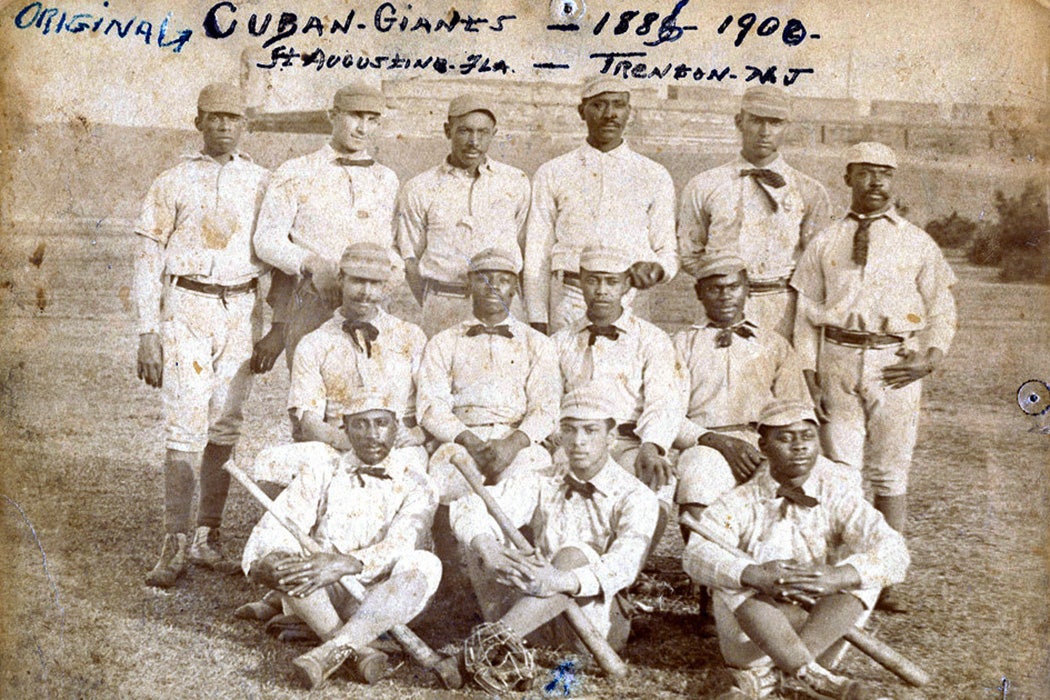Nineteen forty-seven was an important year for baseball. It’s the year that Jackie Robinson made history by breaking the sport’s color line with the Brooklyn Dodgers. But as remarkable as Robinson’s story is, argues historian David J. Laliberte, it is only a tiny part of the whole story of baseball’s integration, and of the role people of color played in the game. As Laliberte writes, Robinson’s story shows “the intense pride—and implicit challenges—earlier ethnic peoples displayed while pursuing baseball dreams.”
Major League Baseball may have been exclusionary in Jim Crow–era America, but people of color found a way to showcase their talents regardless. In 1888, for example, Moses Fleetwood Walker, a mixed-race man from Ohio, played for the Toledo Bluestockings. When he took the field in a game against the Chicago White Stockings, he was abused with racial slurs by White Stockings player Adrian “Cap” Anson, who refused to play if Walker did. Anson and several other players had been threatening to leave the league if Black players were allowed, and, acquiescing to their demands, the league stopped issuing contracts to Black players after 1889. This year, as Laliberte points out, was “the last in which African American players appeared in major professional baseball for fifty-eight years.”
Native American players were also widely involved in baseball. For example, competitive inter-tribal teams were formed in Maine as early as the 1890s, distributing “copies of the annual Spalding’s Base Ball Rules booklet printed in their own Algonquin language by 1912.” The use of Indigenous languages also proved useful in game play, as one player from the 1930s explained: “We all spoke Passamaquoddy, and it was an advantage for us as a baseball team. Whenever the manager wanted someone to bunt, he just hollered it out.” And in the Southeast, “Chickasaw and Choctaw community teams played baseball against whites and against each other” in 1891.
Later, Cuban players began making their mark in the sport, aided by what Laliberte calls an “ambiguous racial position in United States society and sport.” Some players were able to move between groups in a segregated society, “allowing some Cuban ballplayers entrée, though certainly not full acceptance, into these diametrically opposed worlds.” This “ambiguity” also led to Black American players being marketed as Cuban, suddenly making them “foreign—and thereby…acceptable—athletes.”
Weekly Newsletter
But Cuban players from Cuba were also making strides, with some players—notably Rafael Almeida and Armando Marsans—being deemed “white enough” to play for all-white teams. One team owner, worried that the two might be considered Black and therefore unable to play, “traveled to Cuba to acquire genealogical documentation (veracity, of course, questionable) of their white heritage.” As Laliberte writes, “1910s Americans held assuredness of a supposedly European racial lineage as a preeminent demarcator of professional belonging.”
From the Japanese American teams competing across the West as early as 1910, to the Asian American and Pacific Islander barnstorming team the Hawaiian Travelers, who “competed as far east as Chicago and New York City in 1914,” to the establishment of the Negro Leagues in 1920, people of color have long made an impact on the game.
Support JSTOR Daily! Join our new membership program on Patreon today.







